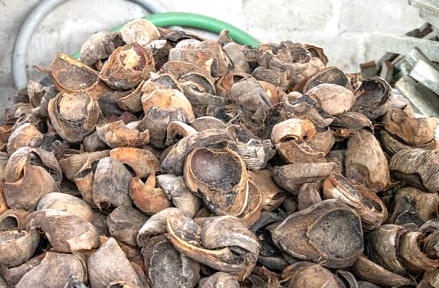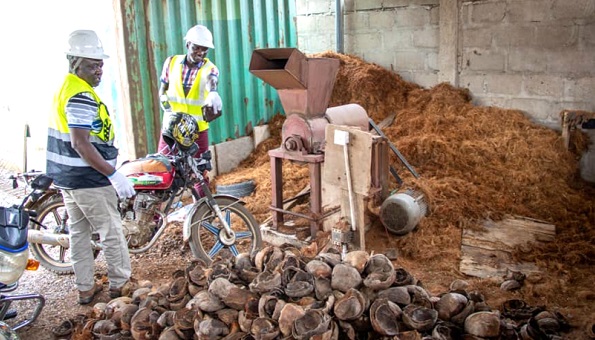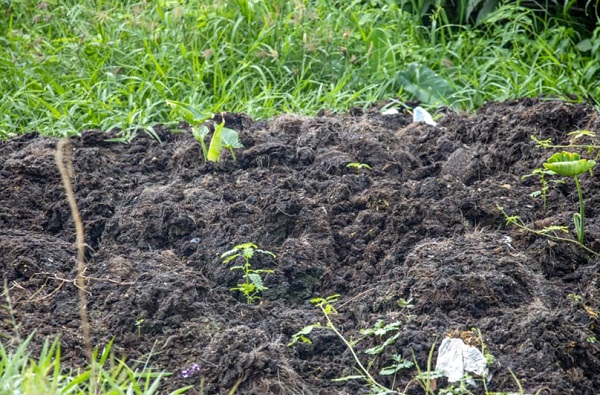
Bio-digester technology: Providing access to household toilets
“I live here with my mother, auntie and 10 siblings. For many years, we had no toilet facilities at home. We used public toilets whose sanitary conditions were so undignifying. The stench that emanated from the toilets was offensive; and each time you used those toilets, you had to bath to take away the stench."
To make a bad situation worse, Peace Dotse, the 26-year-old resident of Adjei Kojo in the Tema West Municipality in the Greater Accra Region, and her family of 12 pay GH¢1.20 each time they used the public toilet.
Advertisement
However, Ms Dotse and her household now live in dignity after they acquired a bio-digester toilet through the World Bank-funded Greater Accra Metropolitan Area Sanitation and Water Project (GAMA-SWP).
"We paid GH¢1,200 for the biodigester toilet and, for the past three months, we have never been to a public toilet; the new toilet is very hygienic; you will not hear of any stench and there are no odours. We no longer have fears of getting any infections and we do not have to spend more money on toilets," she said, when I visited her household on Monday, May 9, this year.
For 48-year-old Eunice Owusua, the biodigester has turned her sanitation story around for the better.
"I was using a septic tank over 19 years. I had to always deal with the stench, and any time it got full, I spent about GH¢500 to desludge it. I have used the bio-digester for just five months. It has a handwashing component attached to it; little water is required to flush it, and there is no odour," she said.
The stories of Gabriel Amawuvi and Evelyn Aboagye Dacosta also changed for the better when they got bio-digesters installed by COMSANS Ghana Limited, a private company working under the World Bank project.
When I visited the premises of COMSANS at Adjei Kojo that same day, some workers were constructing various components of the bio-digester – ranging from concrete slabs, concrete beam supports, to porous slabs.
The Chief Executive Officer (CEO) of the company, John Kojo Armah, walked me through the chain of processes involved in the construction and installation of bio-digesters.
We also visited the dome, the treatment plant for faecal matter desludged bio-digesters.
What is a bio-digester toilet?
Bio-digesters are on-site toilets designed to rapidly separate human excreta from blackwater for degradation under aerobic conditions through the interaction of micro and macro-organisms.
Typically, bio-digesters serve as an alternative to septic tank for the treatment of excreta directly from water closets or pour-flush seats.
The blackwater, made up of raw excreta plus flush water and anal cleansing material, undergo rapid solid-liquid separation through a porous filter in the bio-digester. Solid materials are retained on the porous filter where it is broken down aerobically by micro-organisms and macro-invertebrates.

Coconut husk
Some organisms, particularly earthworms, are introduced into the bio-digester by adding a bit of humus during installation while the macro-invertebrates, including cockroaches come in by themselves.
The effluent is biologically pre-treated and discharged directly into the subsurface soil via drain field pipes or soak-away.
Advantages
The bio-digester is easy to install. They can be installed within 24 hours because the components are usually pre-fabricated.
Unlike other toilet options, small space is required for installation of bio-digesters; therefore, land intake is minimised.

John Kojo Armah (left) explaining how coconut husk is processed into fibre to serve as bulking material for the installation of bio-digesters
Again, biodigesters provide good sanitation practice since they need no mechanical or electrical aeration of solid mass to achieve decomposition. The facilities have been designed in such a way that there is no human contact with excreta.
The maintenance cost for bio-digesters is low since there is usually slow sludge build up when installed and used properly. When sludge accumulates, it is reused as soil conditioner.
Bio-digesters are also environmentally-friendly. Water contamination is minimised when the digesters and effluent pipes are installed above the ground water table and recommended distances from a water source.

Faecal matter from biodigesters converted into manure for use by farmers
Besides, waste is treated under complete aerobic conditions, eliminating odour and air pollution.
Adoption of bio-digesters
The 2021 Population and Housing Census (PHC) revealed that 130,251 households use biodigester toilet across the country. Out of that number, 107,842, representing 82.8 per cent, are in urban areas while 22,409 (17.2 per cent) are in rural settlements.
Also, 57.4 per cent of the households that use biodigesters are in the Greater Accra Region; 14.4 in the Central Region; 6.5 in the Ashanti Region while the other 13 regions put together accounted for 14.5 per cent of the figure.
The National Coordinator of GAMA-SWP, George Asiedu, held the view that the increasing adoption of bio-diesters contributed to the increase access to household toilets and the reduction in open defecation, especially in the Greater Accra Region.
For instance, the 2022 PHC revealed that access to household toilets increased from 21 per cent in 2014 to 51.7 per cent in 2021.
It also showed that open defecation in the Greater Accra Region reduced from eleven per cent in 2015 to 6.2 per cent in 2021, while the national figure stood at 17.7 per cent.
Concerns
Despite these advantages of bio-digesters, there are concerns about the proliferation of untrained artisans who install sub-standard bio-digesters.
Mr Armah observed that some artisans install bio-digesters without considering the texture of the soil. “The soil must be such that water can easily sip through it. If the soil is clayey and not suitable for bio-digester, we can improve it by introducing certain materials to hold the water and release it gradually, but some artisans ignore this,” he said.
He said some clients also failed to adhere to simple instructions in the use of bio-digesters. “If a digester is designed for ten people but the client turns it into a public toilet for many users, it will get full easily and give offensive odour,” he said.
Manual
In response to these concerns, the Ministry of Sanitation and Water Resources (MSWR), through the GAMA-SWP, has developed a manual to serve as a tool for training artisans and a guide to all those who want to get into biodigester toilets construction.
The manual spelt out factors to consider in installing a bio-digester, site selection, space requirement for standard bio-digester, effluent disposal options and the kind of bulking materials to use.
It also provides detailed processes involved in construction of various component of the bio-digester and provides guidelines on operations and maintenance procedures.
Nutshell
As Ghana races against time to achieve sustainable development goal (SDG) six by 2030, there is the need to provide opportunity for many households to have access to bio-digester toilets.
This is a worthy call given that the 2022 PHC identified that households without toilet facilities resort to 1,477,747 defecation points comprising chamber pots, polythene bags, beaches, water bodies, bushes, open fields and gutters.
Writer’s E-mail: [email protected]




